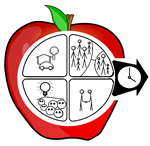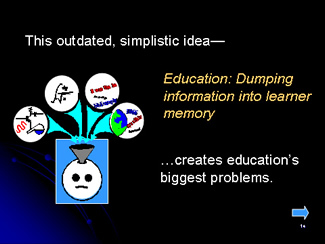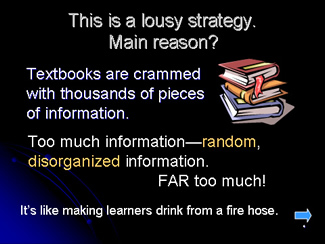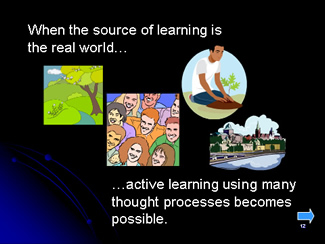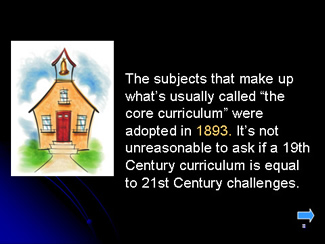Curriculum Problems
(1) Oversimplified learning theory |
|
| Marion Brady, “The Standards Juggernaut,” Phi Delta Kappan, May 2000, pp. 649-651: | |
|
"Many share the view of…Louis Gerstner, Jr., CEO of IBM, who apparently believes that educating has to do primarily with "the distribution of information." If only it could be that simple! Teaching, real teaching, involves the altering of the images of reality in the minds of others, a challenge inherently far more complex than those presented by rocket science." |
What others say (read more)
Related Slideshow:
|
(2) Overwhelming, disorganized content |
|
| Marion Brady, “In education, sometimes less is more,” Knight-Ridder/Tribune op-ed, appearing first in the Orlando Sentinel, May 27, 1997: | |
|
Our brains can’t handle massive amounts of random data, and much of what students are now taught falls into that category. . .Each day, students are given a few minutes of this and a few minutes of that, with little concern for how the information fits together logically or for the mind’s need for order. That’s why we remember so little of what teachers and books once told us. |
What others say (read more)
Related Slideshow:
|
(3) Limited, limiting learning resources |
|
| Marion Brady, “Megafailure,” NASSP Bulletin, Vol. 70, No. 574, November 1995: | |
|
Why does traditional instruction do so little to engage thought processes? Because it gives students almost nothing to think about. It deals primarily in the currency of conclusions, and conclusions are extremely shallow material for exercising complex mental processes. (p. 115) *** When I say students should study here-and-now phenomenon, I mean it literally. We should discard, at least initially, all secondhand versions of reality. Shelve the books. Put away the lecture notes. Shut off the projectors and the computers. Close the library. (Close the library!?) . . . turn to the students and say simply, ‘Look around you. What’s going on here?’ (p. 116) |
What others say (read more)
Related Slideshow:
|
(4) Fragmented knowledge |
|
| Marion Brady, What’s Worth Learning? 2011, Information Age Publishing, p. 11: | |
|
One problem…stands above all the rest in seriousness—the familiar curriculum’s failure to model the fundamental nature of knowledge. In the real world, the world an education is supposed to help learners understand, everything relates to everything. It’s a systemically-integrated whole, the parts of which are mutually supportive. The curriculum should model that whole, should help learners discover or create a corresponding conceptual framework or structure of knowledge, and it doesn’t. Instead, it breaks reality into myriad small pieces and studies each piece in isolation, with hardly a hint either of how the individual pieces relate to each other or how they fit together to form the whole.
(Article on this subject: "An Any-Century Curriculum") |
What others say (read more)
Related Slideshow:
|
| Why We're Getting Worse | |
| HOME | What to Do |
